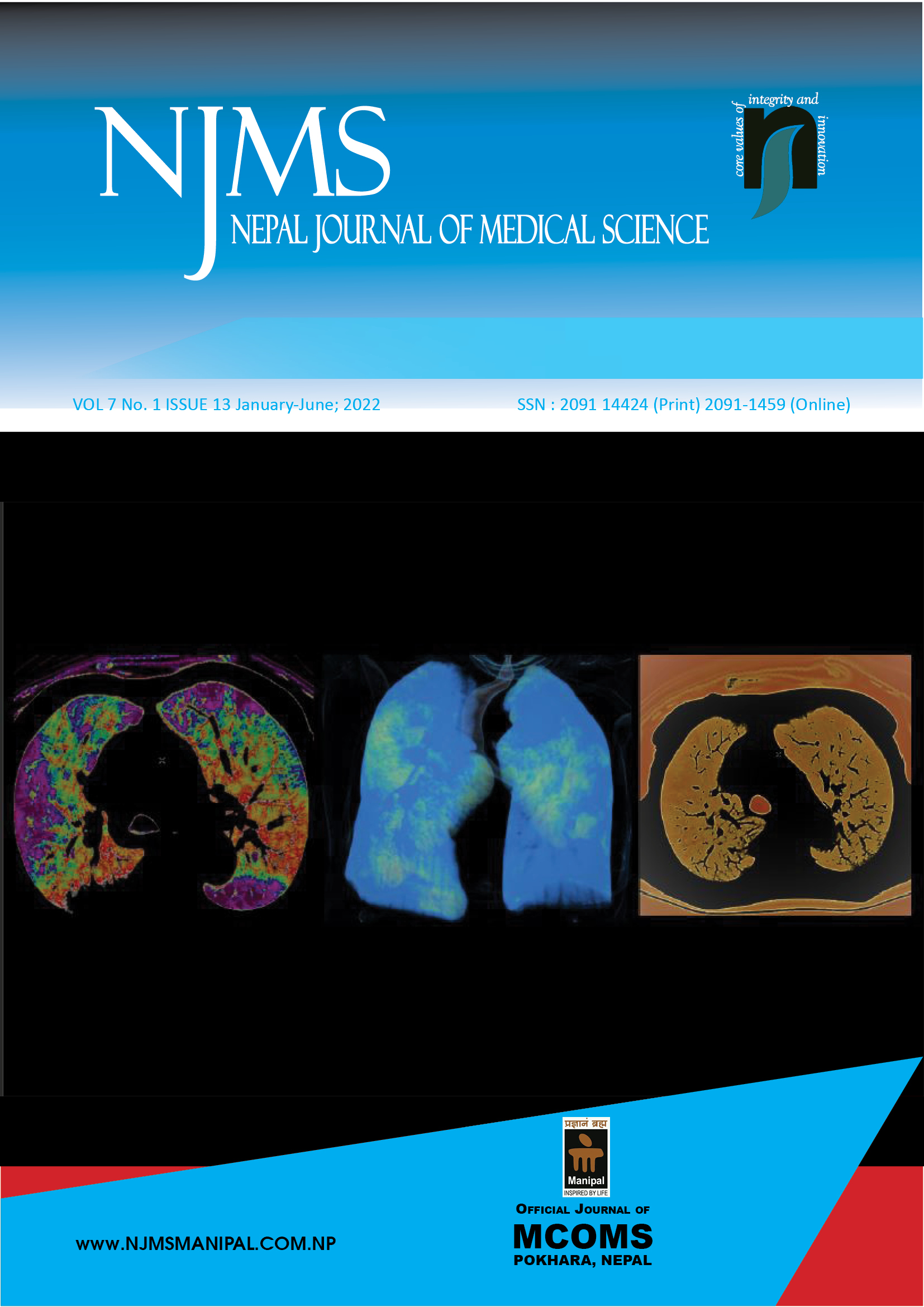Study of the Feto-Maternal Outcomes at Late-Term Pregnancy in a Tertiary Level Hospital in Western Nepal
DOI:
https://doi.org/10.3126/njms.v7i1.44590Keywords:
Cesarean Section, Pregnancy Outcome, Pregnancy, ProlongedAbstract
Introduction: The incidence of prolonged pregnancy is 7%. There is an increased risk to the fetus after 41 weeks of gestation due to a decrease in placental function, oligohydramnios, and meconium aspiration. The risk to the mother also increases leading to an increased incidence of cervical tear, perineal injury, labour dystocia, operative deliveries, and postpartum hemorrhage.
Method: This was an observational, prospective cross-sectional study. A hundred and eleven women at and beyond 41 weeks of gestation fulfilling the inclusion criteria, were included in the study. Data entry and analysis were done using the latest SPSS software version 21 Fisher exact test was used and were depicted in tables, diagrams and charts as required.
Result: Majority of the women had cesarean section 62.2% (n=69), 33.7% (n=37) delivered vaginally and 4.5% (n=5) had assisted vaginal delivery. The most common indication for cesarean section was meconium-stained liquor (20.3%, n=14). Only one woman had postpartum hemorrhage (PPH), one had retained placenta and one had pre-eclampsia. Altogether 10.8% (n=12) neonates needed admission. The adverse fetomaternal outcomes were similar in 41-41 6/7 weeks and completed 42 weeks and beyond the gestational age (p=0.64).
Conclusion: Late-term pregnancy is associated with a higher incidence of cesarean section. However, there was no statistical difference in the feto-maternal outcome at 41-41 6/7 weeks and 42 and beyond weeks of gestation.
Downloads
Downloads
Published
How to Cite
Issue
Section
License
Copyright (c) 2022 Nepal Journal of Medical Sciences

This work is licensed under a Creative Commons Attribution 4.0 International License.
Copyright © by Nepal Journal of Medical Sciences. The ideas and opinions expressed by authors of articles summarized, quoted, or published in full text in this Journal represents only opinions of authors and do not necessarily reflect the official policy of Nepal Journal of Medical Sciences or the institute with which the author(s) is (are) affiliated, unless so specified.




